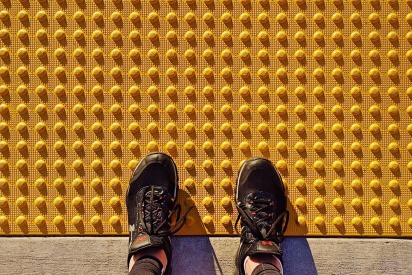 My youngest child has kept me on my toes since the day she arrived. I was standing beside my desk at the construction company where I worked talking with a colleague (whom I did not know very well) when my water broke, 4.5 weeks early. I awkwardly finished my conversation, called my midwife, bid farewell to my place of work and some really lovely people, and then 6 hours later welcomed my girl into the world.
My youngest child has kept me on my toes since the day she arrived. I was standing beside my desk at the construction company where I worked talking with a colleague (whom I did not know very well) when my water broke, 4.5 weeks early. I awkwardly finished my conversation, called my midwife, bid farewell to my place of work and some really lovely people, and then 6 hours later welcomed my girl into the world.
For the better part of her first 10 months she cried. I cried. I held her all the time. It was exhausting. She had some sparkly moments of joy in the midst of the tears, but they were pretty short lived and we quickly returned to discontent as a default position. I was scared every time she fell asleep in my arms, because I knew when I put her down she would inevitably wake up and the cycle of inconsolability would start again. She wasn’t a solid sleeper till 3, and by that point her and I had developed a close yet intensely rocky relationship – me consistently on edge, and her hairpin triggered by seemingly anything that didn’t go just how she liked it.
Therapy was helpful for us. For me. It made things safer for the both of us.
But the past few days I’ve come to realize that in spite of an improved dynamic, I still live waiting for shit to hit the fan. My youngest is still little, and definitely fits the bill as a ‘spirited child’ and so we live with an intensity in our home that can feel like a lot at times. I am often quite ready to defend, to promote safety for others, or set boundaries around behaviours or interactions. I think carefully about how I break bad or disappointing news. I am often cautious and careful, aware that there is an underlying fragility.
For some reason in the last week newly experienced calm has come over our home, in particularly it’s youngest member. There is a sense that she is disarmed. I feel it. We all notice it. We see it in the agreeableness that surfaces on the first request. The gentle thank yous we hear that come without a rough edge. In the way she makes room for others’ thoughts and ideas without interjecting or cutting them down.
As I experienced this softer and safer version of her, I’ve noticed my body bristle against this thing that is so beautiful and lovely. The disarming has freaked me out and I have had to intellectually remind myself to ‘stay soft’ lest my own triggering push her back into an activated spot. We are experiencing greater safety and part of me wants to wreck the safety and return to the chaos, because I think I am skeptical and afraid of this new thing.
After years of being on edge, the edge has become quite a familiar place to be. And it’s sort of comfortable. And the edge is my default position in this relationship. [Not a great one, but it is what it has been so far.] And so in this way, the edge feels easier and safer than to free fall into this unknown land of disarmedness.
Funnily enough, this adverse body reaction to safety has in many ways been a gift for me in this week, specifically a gift for me in my work as a counsellor. Because lots of the people who grace my little blue couch live with some measure of stress or fear or fight/flight response on a daily basis. And for these folks therapy can be an exceptionally significant struggle.
The very thing they want to work towards, feeling safe in their body, in relationships, and in the world is something that at the onset of therapy often feels less safe than the comfort of danger.
For those who have lived in a constant state of alarm or without safety, danger is the familiar and known response. Safety, and the disarming that would come with it, can leave people feeling vulnerable and at risk.
The reality that the therapy room and the therapeutic relationship is a safe place is an initial hurdle for some people. Physically adjusting to a new space and a new person can be a challenging task at the onset of therapy. Many people are hesitant to trust the process…hesitant to trust me, and some express weariness or an expectation that the other shoe will drop and that they will be rejected, kicked out, told their concerns aren’t a big deal, etc. I regularly meet the mistrust of others in the therapy room, as they confront their own bristling against the safety that counselling can provide. The kindness and care experienced in session can register as just too much for some people, and their body will exhibit symptoms of fight/flight/freeze in response to this seemingly desired reality.
This is why people may say they want something, like more closeness, more care, thoughtfulness, kindness, compliments…and then push them away when you offer. When someone’s body registers safety as a risky thing, it can make for a relationship where there is a lot of push/pull present. Safety is at the core desired, but when it gets close then folks may push it away because it is unfamiliar and dangerous. This can make it really, really hard to love someone who struggles to trust felt experiences of closeness or security.
Learning how to trust that safety can be safe, without imploding or sabotaging it, can be hard work. It means learning to recognize old emotional triggers, handling emotional flashbacks, and helping your body learn to be in the present. It also means being gentle with your body that may be wary of goodness, kindness, care, and safety. It means being aware of old stories of danger, and it means slowly helping your body begin to learn that the present narrative of safety is different, and that it is okay to begin to trust it.
For me, it means focusing on the present moments of peace and safety with my kid in an isolated way. I pay extra attention to how peaceful and safe the air between us feels. I notice the tone of her voice and the gentleness present in each specific moment. I see the sparkle in her eyes that speaks to her joy. It means not allowing the past narrative or potential future fall out to hijack my present experience, and impact my reaction. It also means holding out the reality that stories aren’t fixed and that people can change.
So if you find yourself as part of a push/pull pattern…maybe what’s happening has something to do with safety? Perhaps someone you love is imploding available safety as safety a strategy. Maybe it’s too much goodness or kindness or gentleness, and it’s freaking them out. Maybe taking (or offering) a bit of safety from a little farther away could be more palatable. Changing default positions takes time, so be patient with yourself and those you love, as you learn to let safety feel safe.

Never thought about it that way. Glad you were able to get another perspective. I’m celebrating your calm for you then. 🙂
LikeLike
Hi, this was very timely for me. I’ve been ruminating on how I still (ever still always still) withhold trust from some really key relationships because of this barrier to safety, and the idea that I should never depend on anyone. So thanks for the insight ❤
LikeLike